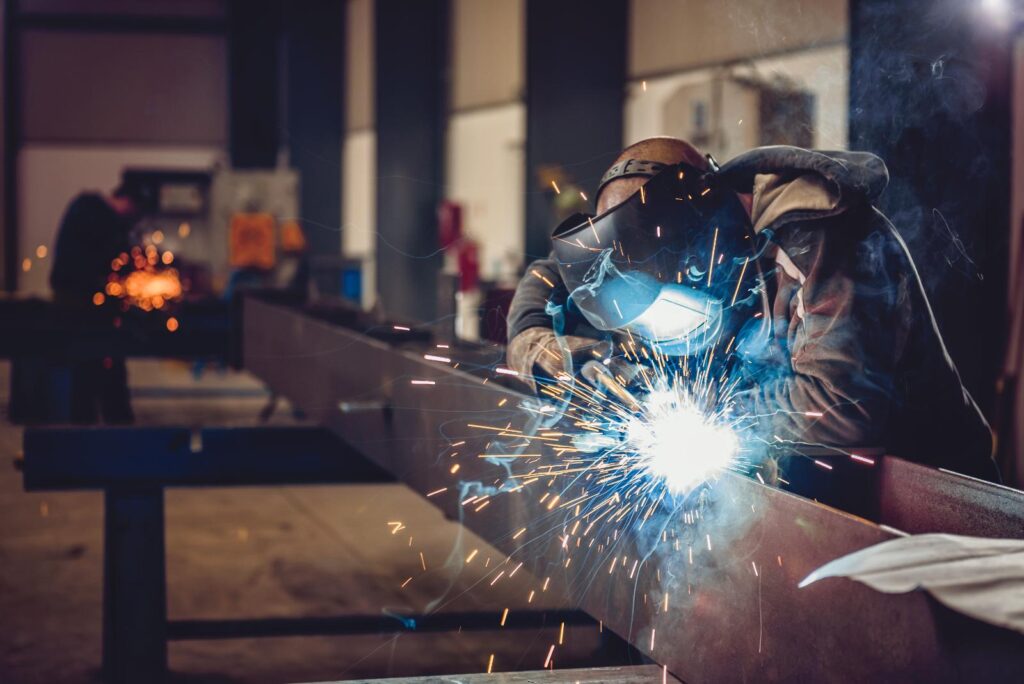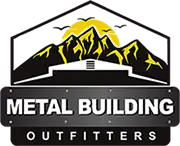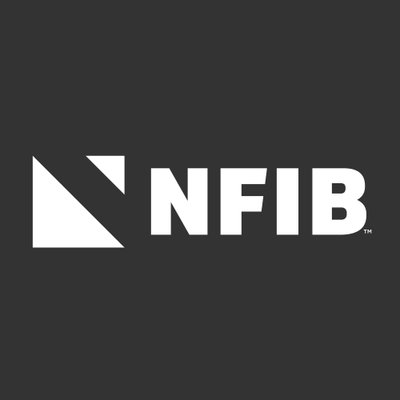
Contents
While traditional building materials may offer charm, they often fall short in durability compared to metal construction. You might wonder how a seemingly cold material can provide warmth in longevity and cost savings. Durable metal structures not only withstand the test of time against harsh weather but also require minimal upkeep, translating to significant financial benefits. As you consider making an investment, it’s crucial to explore how these advantages align with your needs and the overall value they bring to your property. What other factors should you weigh in making this important choice?
Key Takeaways
- Metal construction offers long-lasting durability, resisting natural elements like corrosion, extreme temperatures, and moisture, minimizing repair needs over time.
- Cost-effectiveness is achieved through reduced maintenance and lower lifecycle costs, leading to significant long-term savings for property owners.
- Energy efficiency is enhanced by superior insulation and reflective properties, reducing heating and cooling costs while accommodating sustainable practices like solar panel installations.
- Versatile design options allow for unique, customizable structures with various finishes, textures, and prefabricated components that ensure aesthetic appeal and quick assembly.
- Enhanced safety features, including fire resistance and pest resistance, contribute to increased property value and market demand for metal-constructed buildings.
Long-lasting Durability
When it comes to construction, metal’s innate properties guarantee long-lasting durability that outperforms many traditional materials. Its strength-to-weight ratio allows for designs that maximize structural integrity while minimizing excess material. This guarantees not only a robust framework but also an efficient use of resources, creating a sense of reliability in your projects.
Understanding metal fatigue is essential in applications where loads and stresses fluctuate. Unlike wood or concrete, which can degrade over time, metals can endure considerable stress cycles without compromising their structural integrity. This resilience is particularly important in environments subjected to extreme conditions, such as severe weather or seismic activity. By choosing metal, you’re opting for a material that maintains its performance under these demanding circumstances, fostering a sense of security within your structures.
Moreover, the corrosion resistance of metals, especially when treated or alloyed appropriately, further enhances their longevity. This resistance notably reduces the risk of deterioration, making metal an ideal choice for long-term projects. By guaranteeing that your construction materials can withstand the test of time, you minimize the risks associated with costly repairs or replacements down the line.
Ultimately, selecting metal for construction not only promises durability but also embodies a commitment to quality that resonates with a community dedicated to excellence. By prioritizing structural integrity and understanding the implications of metal fatigue, you position yourself and your projects among the leaders in durable construction practices.
Cost-Effectiveness Over Time
When you invest in durable metal construction, you’re not just paying for immediate benefits; you’re securing long-term savings.
Reduced maintenance costs and inherent energy efficiency can greatly lower your overall expenses over time.
This cost-effectiveness makes metal a smart choice for sustainable building practices.
Long-Term Savings
Durable metal construction offers significant long-term savings, making it a wise investment for both residential and commercial applications. When you consider the initial cost, it’s crucial to look beyond the upfront expenses and recognize the value of a long-term investment.
Metal structures typically provide enhanced durability and resilience, meaning you’ll avoid the frequent repair and replacement costs associated with other materials.
In terms of financial planning, investing in metal construction can lead to lower lifecycle costs. You’re not just purchasing a building; you’re securing a robust asset that can withstand environmental challenges and minimize the impact of inflation on maintenance expenses.
Moreover, energy efficiency often improves with metal construction, resulting in reduced utility bills. Over time, this can translate into substantial savings.
The longevity of metal materials also means that you won’t need to allocate funds for renovations or replacements as frequently, freeing up resources for other projects or investments.
Ultimately, choosing durable metal construction is a proactive approach that aligns with smart financial strategies. It’s about making informed choices today for a more secure and cost-effective tomorrow.
Reduced Maintenance Costs
Although many construction materials require regular upkeep, metal structures demand considerably less maintenance, producing cost-effectiveness over time. This reduced need for maintenance translates into significant savings for you in the long run.
By implementing effective maintenance planning and utilizing preventative measures, you can further enhance the durability of your metal construction.
Here are four reasons why metal construction minimizes maintenance costs:
Corrosion Resistance: Metal structures often feature coatings that protect against rust and corrosion, reducing the frequency of repairs.
Durability: Unlike wood or concrete, metal withstands harsh weather conditions, meaning fewer repairs due to damage.
Ease of Cleaning: Metal surfaces are easier to clean, which means less time and resources spent on upkeep.
Long Lifespan: With a longer lifespan than many traditional materials, metal structures require fewer replacements, leading to lower long-term expenses.
Energy Efficiency Benefits
Energy efficiency is often a key consideration in modern construction, and metal structures excel in this area, providing significant cost-effectiveness over time. By utilizing durable metal construction, you can achieve substantial energy savings, particularly when integrating solar systems. The inherent reflective properties of metal help reduce heat absorption, lowering cooling costs in warmer climates.
Here’s a breakdown of the energy efficiency benefits of metal construction:
| Benefit | Description | Impact on Costs |
|---|---|---|
| Solar Integration | Metal roofs can easily accommodate solar panels, maximizing energy production. | Reduced energy bills |
| Insulation Properties | Metal structures can be designed with superior insulation, enhancing thermal performance. | Lower heating/cooling costs |
| Longevity | Durable materials require less frequent replacement, reducing lifecycle costs. | Long-term savings |
Low Maintenance Requirements
How can low maintenance requirements enhance the value of metal construction? When you choose durable metal materials, you’re investing in a structure that demands considerably less upkeep than traditional construction methods. This low maintenance approach not only saves you time but also reduces your overall costs, allowing you to allocate resources more effectively.
Here are four key benefits of opting for metal construction with low maintenance requirements:
Durability: Metal structures resist wear and tear, which means you’ll experience fewer issues over time. Their robust nature leads to minimal repairs, keeping your building in prime condition.
Weather Resistance: Metal is less susceptible to environmental damage, such as rot or pest infestations. This factor contributes to the longevity of your investment and reduces the need for frequent interventions.
Cost Efficiency: With fewer repairs and maintenance tasks, you’re saving money in the long run. Over time, the reduced need for maintenance translates into considerable financial benefits.
Time Savings: Less upkeep means you can focus on more critical aspects of your operations. You’ll spend less time worrying about repairs and more time on what truly matters.
Incorporating durable metal construction into your projects not only enhances structural integrity but also aligns with your desire for reliability and efficiency.
Environmental Sustainability
When you choose durable metal construction, you’re actively contributing to environmental sustainability through reduced waste generation and energy efficiency benefits.
By utilizing recyclable materials, you minimize the ecological footprint of your projects.
This approach not only conserves resources but also aligns with modern standards for sustainable building practices.
Reduced Waste Generation
Durable metal construction greatly contributes to reduced waste generation, fostering environmental sustainability in multiple ways. By opting for metal, you’re not only making a robust choice but also supporting effective waste management strategies.
Here are four key benefits:
Longevity: Metal structures last considerably longer than traditional materials, reducing the need for frequent replacements and the consequent waste.
Recyclability: Metal is highly recyclable, allowing for materials to be reused in new projects, minimizing the demand for virgin resources.
Modular Design: Many metal components are prefabricated, enabling precise construction that limits excess material use and waste on-site.
Lower Construction Waste: With careful planning and execution, durable metal construction generates less debris compared to conventional methods, aligning with modern recycling initiatives.
Energy Efficiency Benefits
The advantages of durable metal construction extend beyond waste reduction to encompass considerable energy efficiency benefits, which play a vital role in environmental sustainability. By utilizing durable materials, you’re not only ensuring longevity but also enhancing your building’s energy performance.
Metal structures can effectively integrate solar technologies, allowing you to harness renewable energy and reduce dependence on fossil fuels. With the potential for solar integration, you can achieve considerable energy savings, which translates into lower utility bills and a smaller carbon footprint.
The reflective properties of metal surfaces reduce heat absorption, leading to decreased cooling costs in warmer climates. Additionally, proper insulation within metal buildings can considerably enhance thermal performance, minimizing the need for excessive heating or cooling.
Moreover, durable metal construction often incorporates energy-efficient designs and technologies, further optimizing energy use. By prioritizing these features, you contribute to a sustainable future while fostering a sense of belonging within a community that values environmentally conscious practices.
Investing in durable metal construction not only meets your immediate needs but also aligns with a broader commitment to sustainability, ensuring a more resilient future for generations to come.
Recyclable Material Options
Utilizing recyclable material options is crucial for enhancing environmental sustainability in durable metal construction. By integrating recyclable materials into your projects, you contribute to sustainable practices that minimize waste and reduce the environmental footprint of construction activities.
Here are some key recyclable materials to take into account:
Steel: The most recycled material globally, steel can be repurposed without losing strength or quality.
Aluminum: Lightweight and corrosion-resistant, aluminum recycling saves 90% of the energy needed to produce new aluminum.
Copper: Highly valuable, copper can be recycled repeatedly while retaining its properties, making it ideal for electrical applications.
Zinc: Often used for coatings, zinc can be recycled multiple times and is essential for preventing corrosion in metal structures.
Incorporating these recyclable materials not only aligns with sustainable practices but also supports a circular economy.
By choosing materials that can be recycled, you foster a sense of belonging within the community that values environmental stewardship.
Ultimately, your decisions in durable metal construction can lead to a more sustainable future, benefiting both your projects and the planet.
Versatile Design Options
When considering construction materials, metal offers a remarkable range of design options that can adapt to various architectural needs. Its inherent design flexibility allows architects and builders to create structures that not only meet functional requirements but also achieve a high level of aesthetic appeal. Metal can be molded, patterned, and finished in countless ways, enabling unique expressions of creativity and innovation.
Here’s a quick overview of some versatile design options available with metal construction:
| Design Option | Description | Benefits |
|---|---|---|
| Custom Shapes | Metal can be fabricated into any shape or size. | Enhances creativity and uniqueness. |
| Finishes | Available in various textures and colors. | Increases aesthetic appeal. |
| Structural Systems | Can support complex architectural designs. | Provides stability and flexibility. |
| Modular Components | Prefabricated parts allow for quick assembly. | Reduces construction time. |
With these numerous options, you can create structures that resonate with your vision while guaranteeing durability and strength. The ability to combine different metal types and finishes means you can achieve a cohesive look that aligns with modern architectural trends. Whether you’re designing a commercial building, a residential space, or an artistic installation, metal’s versatility guarantees you won’t have to compromise on your design aspirations. Embracing metal construction not only meets your needs but also enhances the overall visual impact of your project.
Enhanced Safety Features
Enhanced safety features in durable metal construction play an important role in ensuring the longevity and resilience of structures.
By adhering to strict safety standards, you can greatly mitigate risks associated with structural failure. When you opt for metal construction, you’re investing in a framework that boasts superior structural integrity.
Here are four key advantages that enhance safety in your projects:
Fire Resistance: Metal doesn’t burn, reducing the risk of catastrophic fire events that can compromise safety.
Robust Load-Bearing Capacity: Durable metal can support heavier loads without deforming, a crucial feature for buildings in high-traffic areas.
Resistance to Pests: Unlike wood, metal is impervious to termites and other pests, ensuring that the integrity of your structure remains intact over time.
Predictable Performance: Metal’s predictable response to stress and strain helps engineers design safer structures, reducing the likelihood of unexpected failures.
Resistance to Natural Elements
Durable metal construction offers exceptional resistance to natural elements, making it an ideal choice for structures exposed to harsh environmental conditions. When you choose metal, you gain significant advantages in weather resistance and elemental durability, ensuring your investment withstands the test of time.
Metal structures are inherently resistant to various weather-related challenges. Unlike wood, which can warp or rot, metal remains stable and strong even under extreme temperatures and moisture. This resilience minimizes maintenance costs and extends the lifespan of your building.
Additionally, metals like galvannealed steel and aluminum can be treated to enhance their resistance to corrosion, further protecting your structure from the elements.
You’ll appreciate how durable metal construction stands up to wind, rain, and snow. In areas prone to severe storms, metal roofs and walls provide peace of mind, offering superior strength against high winds and heavy precipitation. This means fewer repairs and a lower risk of structural failure due to environmental stressors.
Moreover, the thermal properties of metal contribute to energy efficiency, helping you maintain comfortable indoor conditions regardless of external temperatures. This efficiency not only reduces energy costs but also supports a sustainable approach to construction.
Speed of Construction
Metal construction not only excels in resistance to natural elements but also greatly speeds up the building process. When you opt for metal construction, you can expect shorter construction timelines and improved project efficiency. This approach allows you to bring your vision to life faster, minimizing delays and maximizing productivity.
Here are four reasons why metal construction enhances speed:
Pre-fabrication: Many metal components can be manufactured off-site, ensuring that everything fits perfectly upon arrival. This reduces on-site assembly time.
Lightweight Materials: Metal structures are remarkably lighter than traditional materials like concrete. This reduced weight simplifies transportation and installation, speeding up the entire process.
Design Flexibility: Metal’s adaptability allows for quick modifications during the construction phase. You can easily make changes without affecting the overall timeline.
Rapid Assembly: Metal components can be quickly connected using bolts and welding, eliminating lengthy curing times associated with concrete. This results in faster completion rates.
Customization Possibilities
When it comes to construction, the possibilities for customization with metal structures are virtually limitless. You can incorporate custom designs tailored to your specific needs, allowing you to create a structure that not only meets functional requirements but also resonates with your personal style.
Whether it’s a commercial building, industrial site, or a residential home, metal construction offers the flexibility to adapt to your vision.
One of the standout features of metal construction is the ease with which you can integrate personalized features. From unique architectural elements to specialized layouts, metal frameworks can accommodate various configurations.
This ability to customize guarantees that your structure aligns with your operational goals while enhancing aesthetic appeal.
Moreover, advancements in technology have made it simpler than ever to visualize and implement your custom designs. Using software tools, you can simulate your ideas before the actual construction begins, allowing for adjustments and refinements.
This preemptive approach minimizes errors and guarantees that the end result is a true reflection of your intentions.
The adaptability of metal materials also means you can choose from a range of finishes, colors, and textures that suit your preferences.
This level of customization not only enhances the overall appearance but also allows for branding opportunities, especially in commercial settings.
Ultimately, the customization possibilities in metal construction empower you to create a space that feels uniquely yours, fostering a sense of belonging and pride in your investment.
Increased Property Value
Investing in durable metal construction greatly boosts your property’s appeal and value.
Its long-lasting nature attracts buyers, enhancing market demand in both residential and commercial sectors.
As a result, you’re likely to see a stronger return on investment when you choose metal over traditional materials.
Long-lasting Investment Appeal
Durable construction materials offer a significant advantage regarding property value, making them a wise choice for homeowners and investors alike.
When you invest in durable metal construction, you’re not just enhancing the aesthetic appeal of your property; you’re also ensuring long-term investment longevity.
Here are four key benefits that support this assertion:
Resilience: Metal structures resist weathering and wear, reducing maintenance costs and preserving property condition.
Energy Efficiency: Many metal buildings incorporate insulation and energy-efficient designs, lowering utility bills and appealing to environmentally conscious buyers.
Timeless Design: The sleek, modern appearance of metal construction aligns with contemporary architectural trends, attracting prospective buyers.
Market Stability: Durable materials often retain their value better than traditional options, providing a competitive edge when reselling.
Enhanced Market Demand
The advantages of durable metal construction extend beyond mere longevity; they greatly enhance market demand for properties. When you invest in metal structures, you’re not just choosing a resilient material; you’re positioning yourself favorably within a competitive real estate market.
Properties built with durable metal often see increased demand due to their reputation for sustainability and lower maintenance costs. Buyers today prioritize longevity and energy efficiency, factors that metal construction inherently delivers.
This focus on durability contributes to overall market growth. As more consumers recognize the value of properties constructed with metal, you can expect a ripple effect in property values. Homes and commercial buildings made from metal not only attract buyers but also command higher prices, translating to significant returns on your investment.
Moreover, as urban areas evolve and sustainability becomes a priority, properties featuring durable metal construction are more likely to be sought after. By aligning yourself with current market trends, you guarantee that your property remains relevant and appealing.
Ultimately, embracing durable metal construction is a strategic move that enhances your property’s marketability and value, fostering a sense of belonging in a community that values innovation and sustainability.
Final Thoughts
To sum up, investing in durable metal construction is like planting a tree that bears fruit for years to come. Its long-lasting durability, low maintenance needs, and cost-effectiveness make it a wise choice for any project. Not only do these buildings resist the elements and enhance property value, but their sustainable qualities align with modern environmental standards. Embracing metal construction means you’re choosing a strong, efficient, and adaptable solution for your future needs.
Recent Posts
Benefits of Using Metal in Construction Projects
Isn’t it fascinating how a simple material can transform the landscape of construction? When you
Benefits of Choosing Strong Metal for Construction
When it comes to bolstering your construction projects, opting for strong metal for construction can
Maximize Longevity With Metal Garage Solutions
When you consider investing in a metal garage, metal solutions offer a remarkable blend of




